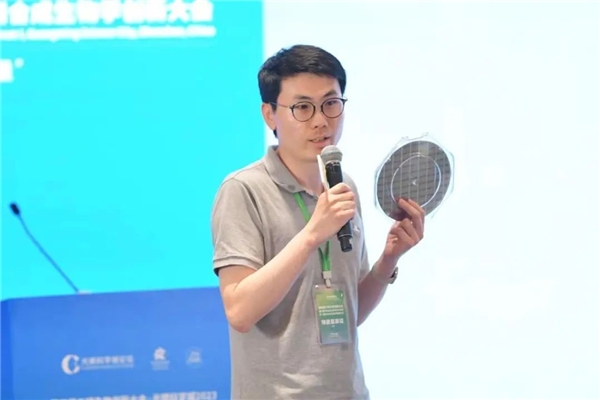在发表于6月14日《新英格兰医学杂志》[1]上的一篇论文中,研究人员证实全基因组测序可以提供在影响感染控制和患者管理的特点时间范围内有关细菌传播的临床相关数据。

来自桑格研究所、剑桥大学以及基因测序公司Illumina Inc的一个科研团队,用2009年一家医院新生儿重症监护病房爆发的MRSA样本进行了这项研究。
MRSA细菌感染是一个重要的公共健康问题,在美国每年大约有19000例死亡。专家表示,分析MRSA的当前实验技术没有提供如此详尽的数据,这意味着应对疫情它们起不到太大作用。
这项研究为更快诊断早期阶段疾病的新兴研究增加了更好的技术,从而允许发现更有效的治疗方法,减少医疗成本。
2011年6月《科学•转化医学》[2]上的一篇论文表明,基因测序可以成为一种有希望的诊断方法。一次基因测序就可以发现所有可能出现的基因突变。该论文的作者之一理查德.吉布斯(Richard Gibbs)认为,在未来的3到4年内,90%的单基因突变引起的疾病会得到解决。
而全基因组测序正推动着这一切的发展。2011年欧洲大肠杆菌爆发,基因组测序也有所应用,尽管只是在后期帮助确定病源来源。
生物探索采访华因康基因科技有限公司技术总裁盛司潼,他也表示,基于测序平台对疾病的基因信息状态进行早期预测和监控将是未来的发展趋势。
专家们认为,基因组时代已经到来,从基因组学角度实现传统医学的转化,将有望使个体化医学用于疾病预防和治疗的不同阶段。
然而全基因组测序成为医院常规医疗保健一部分,还有许多障碍。昂贵的成本是阻碍基因检测的一个因素。影响全基因组测序的个体化医疗到来的另一更大障碍来自于社会。
一台测序仪仪器的价格大约在50万到75万美元,而检测一次的费用也高达5000到1万美元。这种方法检测可靠,但是价格的确不菲。研究人员估计,当对单个病人的测序费用降至1000美元的时候,测序技术才有可能在临床上得到广泛应用。
中国科学院北京基因组研究所副所长于军认为,从技术上讲,全基因组测序引领的个体化医疗已经完全没有前行的障碍了,但还是需要5-10年时间才能实现。 未来的基因组学时代、个体化基因组医疗时代,可能会遇到比转基因食品更棘手的问题,如法律问题、伦理和道德问题、个人隐私问题等等。
从基因组的角度来讲,我们能够找到聪明人和相对聪明人相关的基因。但是如何来解释它、应用它,就不是科学家能够说了算的了,而在于社会的认同和接受程度。例如,几十年前人工授精对社会的震撼很大,不用结婚也可以生孩子,但到现在人工授精的孩子已经有了自己的孩子了,社会对这一现象的接受程度是和每个人对法律的认识及科学发展水平相关的。在未来10年之内,社会要接受这样的测试,这是现实。

[1] Rapid Whole-Genome Sequencing for Investigation of a Neonatal MRSA Outbreak
BACKGROUND Isolates of methicillin-resistant Staphylococcus aureus (MRSA) belonging to a single lineage are often indistinguishable by means of current typing techniques. Whole-genome sequencing may provide improved resolution to define transmission pathways and characterize outbreaks.
METHODS We investigated a putative MRSA outbreak in a neonatal intensive care unit. By using rapid high-throughput sequencing technology with a clinically relevant turnaround time, we retrospectively sequenced the DNA from seven isolates associated with the outbreak and another seven MRSA isolates associated with carriage of MRSA or bacteremia in the same hospital.
RESULTS We constructed a phylogenetic tree by comparing single-nucleotide polymorphisms (SNPs) in the core genome to a reference genome (an epidemic MRSA clone, EMRSA-15 [sequence type 22]). This revealed a distinct cluster of outbreak isolates and clear separation between these and the nonoutbreak isolates. A previously missed transmission event was detected between two patients with bacteremia who were not part of the outbreak. We created an artificial “resistome” of antibiotic-resistance genes and demonstrated concordance between it and the results of phenotypic susceptibility testing; we also created a “toxome” consisting of toxin genes. One outbreak isolate had a hypermutator phenotype with a higher number of SNPs than the other outbreak isolates, highlighting the difficulty of imposing a simple threshold for the number of SNPs between isolates to decide whether they are part of a recent transmission chain.
CONCLUSIONS Whole-genome sequencing can provide clinically relevant data within a time frame that can influence patient care. The need for automated data interpretation and the provision of clinically meaningful reports represent hurdles to clinical implementation.
文献链接:https://www.nejm.org/doi/full/10.1056/NEJMoa1109910
[2] Deep Sequencing of Patient Genomes for Disease Diagnosis: When Will It Become Routine?
Next-generation sequencing technologies have greatly lowered the cost of whole-genome sequencing (WGS) and related approaches. Thus, comprehensive sequencing for diagnostic purposes may clear this financial hurdle in the near future. The report by Bainbridge and colleagues in this issue of Science Translational Medicine illustrates the diagnostic power of WGS. In this Perspective, we discuss whether and how genome sequencing might become routine for clinical diagnosis.
文献链接:https://stm.sciencemag.org/content/3/87/87ps23.abstract







